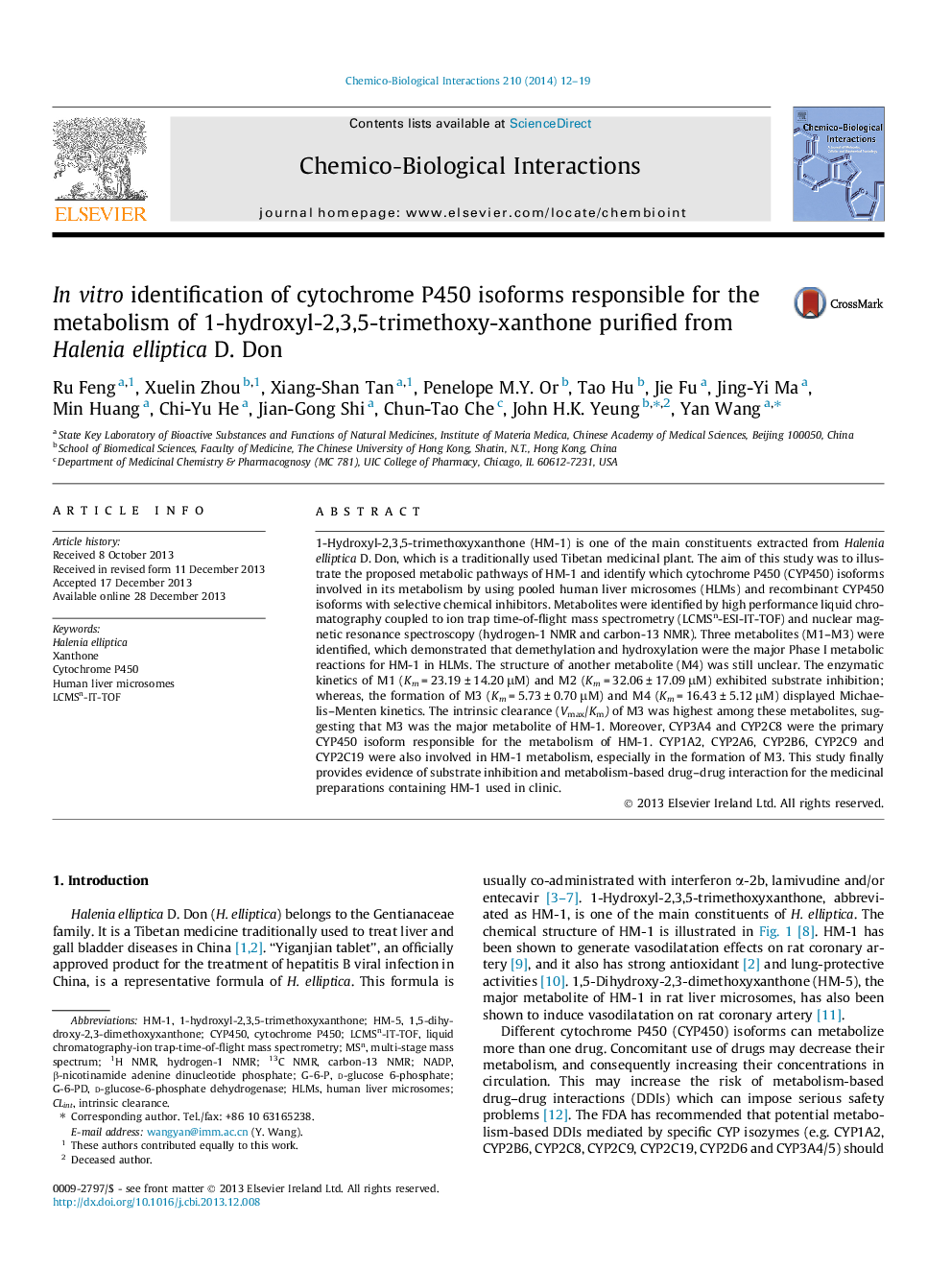| Article ID | Journal | Published Year | Pages | File Type |
|---|---|---|---|---|
| 2580493 | Chemico-Biological Interactions | 2014 | 8 Pages |
•The metabolites of xanthone were identified using LCMSn-ESI-IT-TOF and NMR.•The pathways of xanthone metabolism were elucidated in human liver microsomes.•The CYP450 isoforms responsible for the metabolism of the xanthone were identified.
1-Hydroxyl-2,3,5-trimethoxyxanthone (HM-1) is one of the main constituents extracted from Halenia elliptica D. Don, which is a traditionally used Tibetan medicinal plant. The aim of this study was to illustrate the proposed metabolic pathways of HM-1 and identify which cytochrome P450 (CYP450) isoforms involved in its metabolism by using pooled human liver microsomes (HLMs) and recombinant CYP450 isoforms with selective chemical inhibitors. Metabolites were identified by high performance liquid chromatography coupled to ion trap time-of-flight mass spectrometry (LCMSn-ESI-IT-TOF) and nuclear magnetic resonance spectroscopy (hydrogen-1 NMR and carbon-13 NMR). Three metabolites (M1–M3) were identified, which demonstrated that demethylation and hydroxylation were the major Phase I metabolic reactions for HM-1 in HLMs. The structure of another metabolite (M4) was still unclear. The enzymatic kinetics of M1 (Km = 23.19 ± 14.20 μM) and M2 (Km = 32.06 ± 17.09 μM) exhibited substrate inhibition; whereas, the formation of M3 (Km = 5.73 ± 0.70 μM) and M4 (Km = 16.43 ± 5.12 μM) displayed Michaelis–Menten kinetics. The intrinsic clearance (Vmax/Km) of M3 was highest among these metabolites, suggesting that M3 was the major metabolite of HM-1. Moreover, CYP3A4 and CYP2C8 were the primary CYP450 isoform responsible for the metabolism of HM-1. CYP1A2, CYP2A6, CYP2B6, CYP2C9 and CYP2C19 were also involved in HM-1 metabolism, especially in the formation of M3. This study finally provides evidence of substrate inhibition and metabolism-based drug–drug interaction for the medicinal preparations containing HM-1 used in clinic.
Graphical abstractFigure optionsDownload full-size imageDownload as PowerPoint slide
